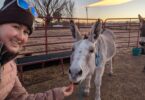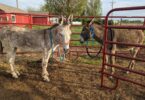Basic Bad Weather Prep Your Horse Will Thank You For
Extreme weather is becoming more and more common. Wildfires, tornadoes, and even floods are dangerous weather events for horses and livestock. As someone who has lived in “Tornado Alley” her whole life, I have found it so important to have plans in place for both myself and my horses.
It’s important to plan ahead for natural disasters so you and your equines are ready for anything Mother Nature may throw at you. Being proactive in your planning allows you to act quickly and helps keep your horses out of harm’s way.
Whether the Weather
Different kinds of weather events require different types of preparation. I like to think of it as having the right tools for the right job—you wouldn’t carry an umbrella into a windstorm!
General Emergency Preparation
Whether you’re facing a severe storm, wildfire, tornado, or hurricane, you need to have some basic bad weather prep in place.
1. Check your barn for any potential hazards
- Look for loose equipment that may need to be tied down
- Make sure your barn windows close and lock properly
2. Create a safe space for your horses
- Keep a bit of excess inventory of supplies including feed, water, and medication
3. Prep an emergency kit
- Include first aid supplies
- Have an extra halter & lead rope ready for each animal
- Include a copy of registration papers and vaccinations
4. Consider how you can identify your horse
- Temporary Identification Methods:
- Neck collar
- Halter tag
- Livestock-marking crayon
- Permanent marker to mark hooves
- Permanent Identification Methods:
- Microchip
- Brand
- Lip tattoo
5. Have a battery-powered All-Weather Radio.
- If you lose power, this will help you stay informed about weather alerts and potential risks
 6. Write out your plan in case of an emergency and communicate it to those who need to know
6. Write out your plan in case of an emergency and communicate it to those who need to know
- If something happens when you are away, you want to be sure your animals will be well taken care of
7. Practice your evacuation routines
- This may feel silly at the time, but muscle memory can be very important during stressful situations
- If you have already practiced gathering your emergency kits, loading horses, etc, it will help you stay calm should a bad weather event occur
Tornadoes
First, it is important to understand the difference between a tornado watch and a tornado warning. The best explanation I ever heard likened the two terms to tacos.
Wait, what?!
A tornado watch means you have all the ingredients to make tacos—tortillas, protein, lettuce, guac, and more.
If you wanted to, you could totally make a great taco.

Source: Canva and wfaa.com
A tornado warning means there are tacos *on the plate.*
Taco Time is happening and you’d better be ready!
When creating your tornado plan make sure to:
- Designate a safe space for your horses (either in the barn or pasture)
- If you are able, during non-extreme weather months, reinforce walls and install windbreaks
- Make sure your First Aid Kit (both horse and human) is fully stocked
- Tie or braid identifying information into your horses mane or tail
- If a warning has been issued, shut off the electrical power and move your horses to a safe space
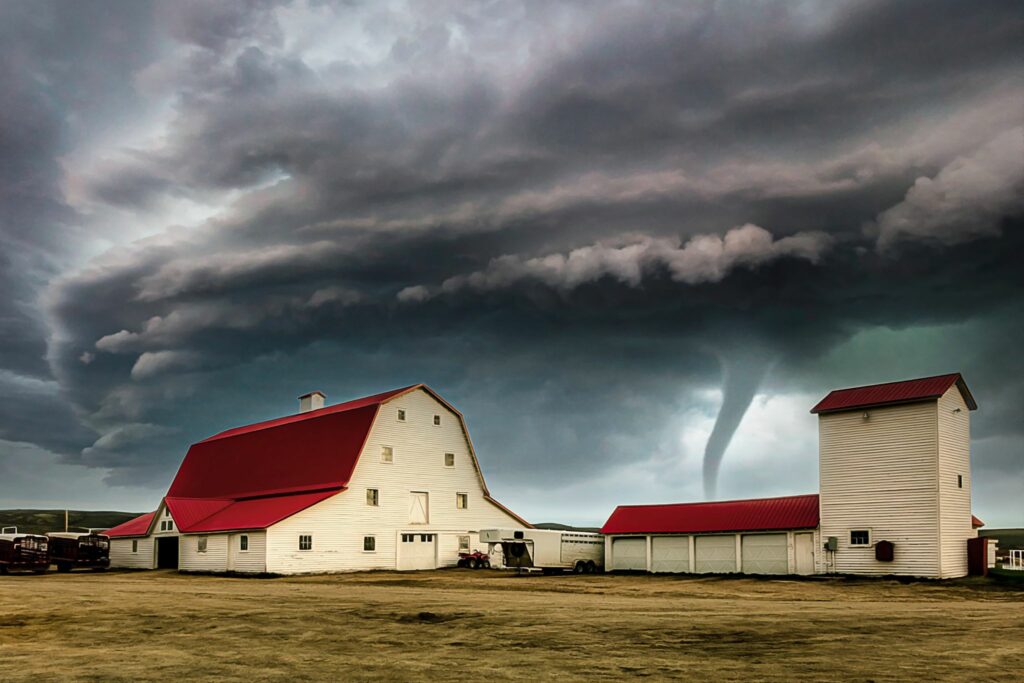
Source: Canva
The National Weather Service deems a safe space as an interior room with no windows or doors. Obviously, this is nearly impossible to accomplish at a barn, but there are companies that can help you build a separate shelter for your horses or reinforce your barn to make it safer.
If you’re interested in learning more about building a tornado safe space for your barn, this website from FEMA is a great starting point!
Want to learn more about equine safe rooms? Check out this article!
There is an ongoing debate about whether horses are safer in or out of barns during events like tornadoes. It really comes down to what the landscape of your barn/fields are like.
For example, if you have heavily wooded pastures, the chance of debris injuring your horse is much greater.
Floods
Did you know in flash floods, it may actually be safer for a horse to be outside?
Horses will follow their natural instinct to get to higher ground.
If, however, you have the time to evacuate from a flood, here is what you need to have prepared:
- An evacuation plan and route to get to higher ground
- Feed and supplies, stored in waterproof containers
- Clean drinking water
- Vet records in a binder/waterproof container
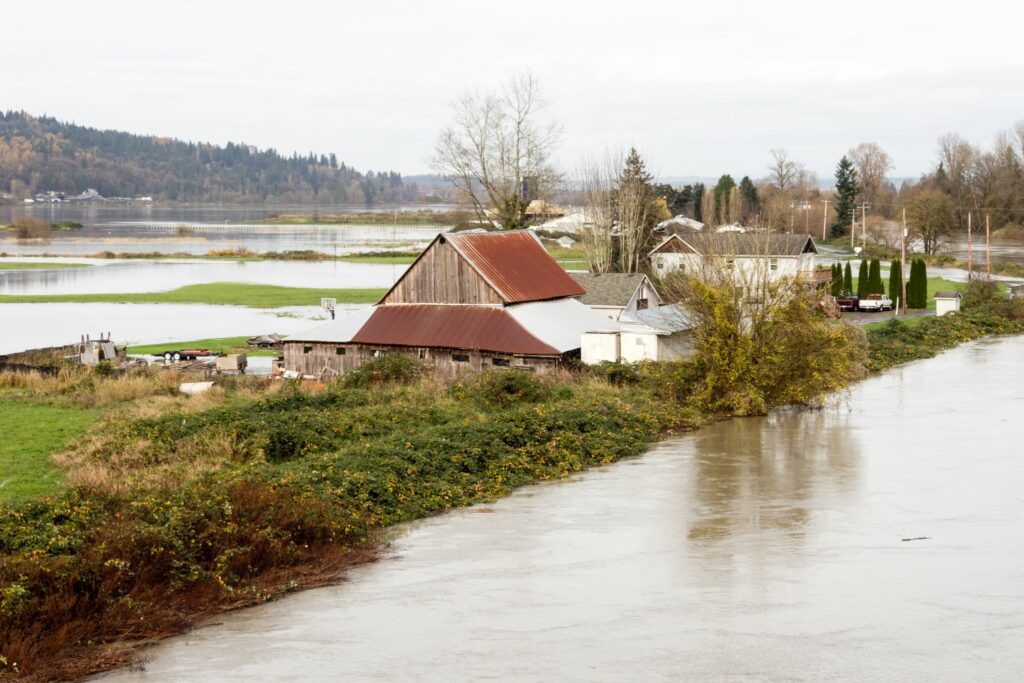
Source: Canva
Fires
If I’m speaking honestly, the threat of wildfire might be my biggest fear as a horse owner. Sure, tornadoes are terrifying, but with advances in technology, even they are easy to track when on the ground.
Wildfires are erratic, unpredictable, and hard to contain. The best thing we can do is be prepared for such an event to occur and have a plan in place.
General Fire Prevention Tips:
- Make sure hay is stored when dry.
- Did you know that wet hay can spontaneously combust?
- Create a fire defensible space.
- Stay on top of clear debris and brush around your barn and your property—don’t add fuel to the fire!
- Best practice is removing debris/brush within 30 ft of the structure you are trying to protect
- Map out all evacuation routes—you need to have multiple plans in case one is already blocked by fire
- Have an evacuation kit with your horses medical supplies, vet records, and feed/supplements for a week or more
- If a wildfire is approaching, evacuate early if possible. Don’t wait for a mandate.
- It is better to be safe than stuck on the road as a fire approaches

Source: Canva
If you cannot evacuate your horses safely, you could consider turning them loose, but you must make sure they cannot get back into the barn.
It has been documented that horses will return to a burning barn because their stall is a familiar place for them in times of stress.
If you do have to turn them loose, make sure you have some kind of identification on your horse. There are several forms of identification you can use (or a combination!).
Consider:
- A tag braided into their mane or tail
- Using a livestock crayon to physically write your information on your horse
- Using hair clippers to shave identifying information onto your horse
This pamphlet prepared by the National Fire Association is a great resource for further research
Hurricanes
If a hurricane is forecasted to hit your area, you will need to take action quickly to ensure your horses stay safe. If you have the chance to evacuate, that is definitely one option! But there also are things you can do at your barn to keep your horses as safe as possible.
- Secure any outdoor equipment—like jump standards, barrels or poles. These need to be tied down so they don’t pose a debris threat
- Access to water is very important! Fill all water buckets, extra containers, or have an emergency water source available.
- Horses need 12-20 gallons of water a day!
- Cover hay with waterproof tarps
- Elevate personal items like tack trunks
- Cut power to the barn to prevent electrical fires
This article from the North Carolina Disaster Center is a great resource for our readers located in hurricane prone areas.
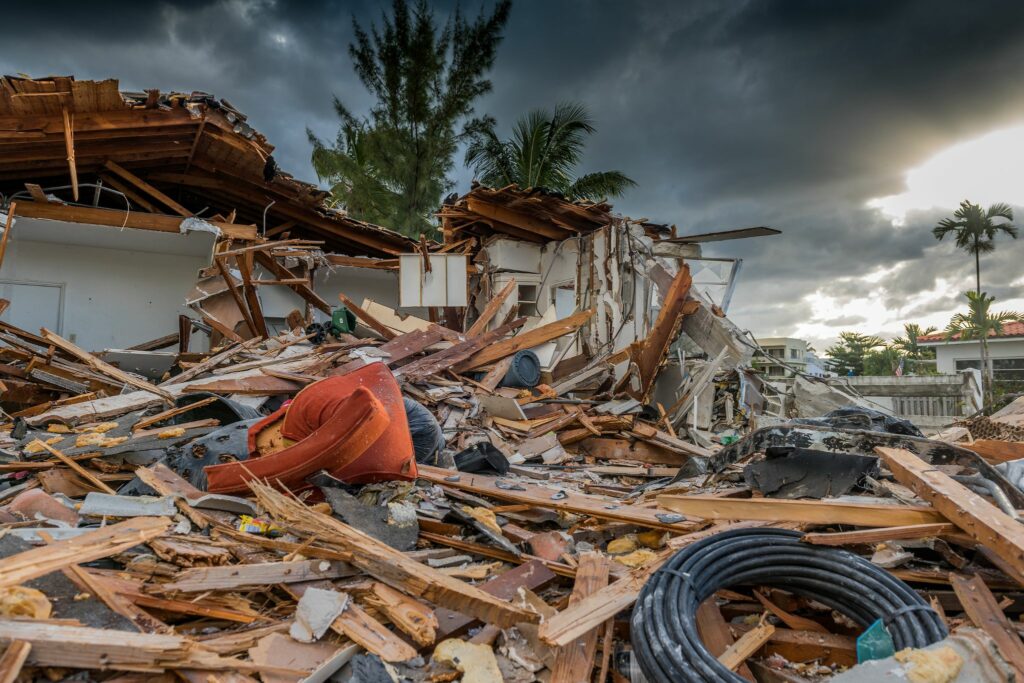
Source: Canva
Frequently Asked Questions
Q: What is the most common medical emergency for horses?
Colic is the leading cause of death in horses and is also the number one reason equine owners call the vet.
Q: How do you prepare a horse for a storm?
Plan ahead and make sure you have enough water, feed, and medications for approximately 1 week. Assume 12-20 gallons of water per horse along with appropriate hay & grain rations, as well as any meds.
Q: Where is the best place for a horse during a tornado?
If there is time, you could consider evacuating your horse before bad weather hits. However, in many cases, this isn’t feasible. Outside could be the best place for your horse. While inside will protect them from flying debris, outside provides more options for escape. Horses have instincts to help them survive in these types of scenarios!

Source: Canva
Parting Thoughts
Whether it is a tornado, flood, hurricane, or wildfire, extreme weather events can turn dangerous for both horses and humans in an instant.
By taking simple steps now to be prepared in the case of an emergency, you will be able to help both you and your horses stay safe during a natural disaster. Remember to be weather alert, stay informed, and plan ahead!
P.S. Enjoy this article? Trot on over to:
- 9 Best Horse Trailer Brands That Really Pull Their Weight
- First Time Horse Ownership: A Helpful Beginner’s Guide
- 10 Best Bumper Pull Horse Trailer Brands of All Time
- Truck Talk: 10 Best Choices to Pull Your Horse Trailer
- You CAN Do This: Trailering a Horse for the First Time
- How to Safely Tie Horses in a Trailer (Tips, Video, etc)
- Ultimate Packing and Horse Trailering Checklist
- 8 Best Horse Cameras (Action, Helmet, Trailer, Barn, Drone)





